Publisher(s) Nintendo Artist(s) Takaya Imamura Platform(s) SNES Series Star Fox Genre Shoot 'em up | Director(s) Katsuya Eguchi Composer(s) Hajime Hirasawa Initial release date 21 February 1993 Producer Shigeru Miyamoto | |
Programmer(s) Dylan Cuthbert
Giles Goddard
Krister Wombell Developers Nintendo, Argonaut Games, Nintendo Entertainment Analysis & Development Designers Shigeru Miyamoto, Takaya Imamura, Katsuya Eguchi, Yoichi Yamada Similar Star Fox games, Shigeru Miyamoto games, Shoot 'em up games | ||
Star Fox (スターフォックス, Sutā Fokkusu), released as Starwing in Europe, is a rail shooter video game developed and published by Nintendo for the Super Nintendo Entertainment System. The first game in the Star Fox series, Star Fox was released in Japan on February 21, 1993, in North America on March 26, 1993, and in Europe on June 3, 1993.
Contents
- Gameplay
- Setting and characters
- Story
- Development
- Competition version
- Reception and legacy
- Series
- References
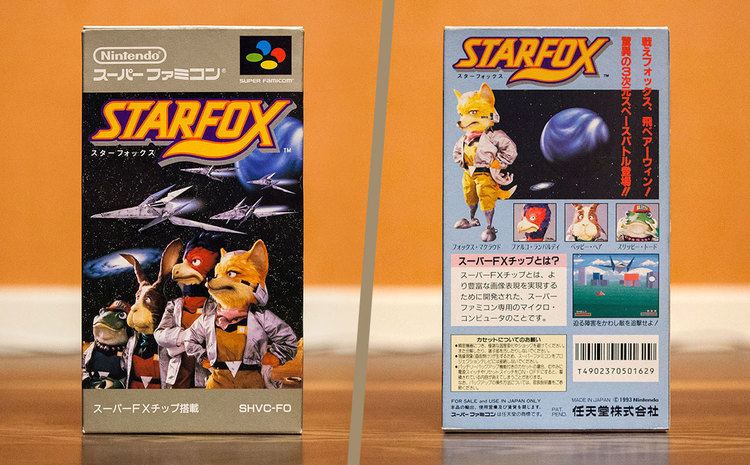
It was the second three-dimensional Nintendo-developed game, behind 1992's X, also developed by Nintendo together with Argonaut Software. Star Fox was Nintendo's first game to use polygonal graphics. It accomplished this by being the first ever game to use the Super FX graphics acceleration coprocessor powered GSU-1. The complex display of three-dimensional models with polygons was still new and uncommon in console video games, and the game was much-hyped as a result.
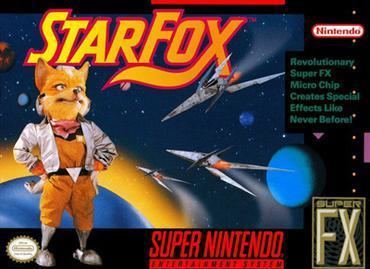
The storyline involves Fox McCloud and the rest of the Star Fox team, who must defend their homeworld of Corneria against the attacking forces of Andross. This storyline has been re-imagined in three reboots/remakes: as Star Fox 64 on the Nintendo 64 in 1997, Star Fox 64 3D on the Nintendo 3DS in 2011, and Star Fox Zero on the Wii U in 2016.

Gameplay
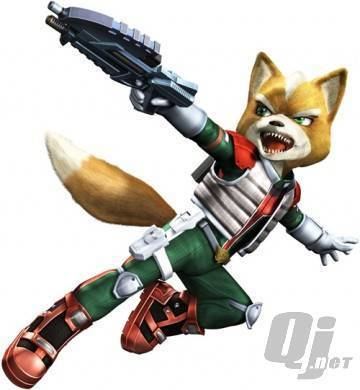
Star Fox is a rail shooter in a third-person and first-person 3D perspective. The player must navigate Fox's spacecraft, an Arwing, through environments while various enemies (spaceships, robots, creatures, etc.) attack them. Along the way various power-ups are placed in the stage to help the player. The player receives a score at the end of each level based on how many enemies have been destroyed and how well the player has defended his/her teammates. At the end of each level there is a boss that the player must defeat before progressing to the next level.
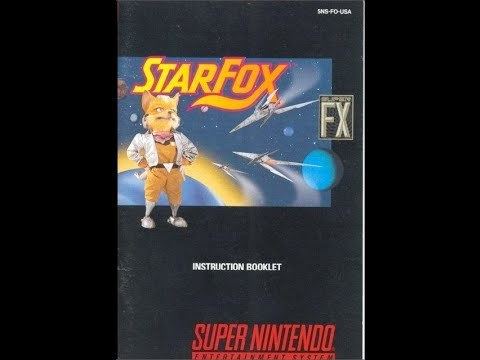
Star Fox possesses certain unique elements that differentiate it from the standard scrolling shooter. Most scrolling shooters force the player forward at a constant speed. While this is also true for Star Fox, there are thrusters and retro-rockets on the Arwing that allow the player to temporarily speed up and slow down. These can be used to maneuver around enemy attacks and other obstacles.
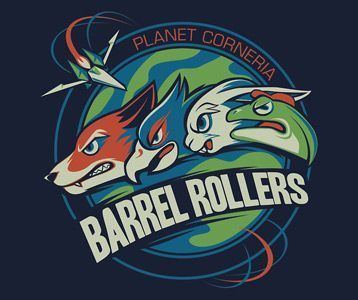
The damage model is another difference. In the standard scrolling shooter, touching almost any object results in the immediate destruction of the player's craft. In Star Fox, the Arwing has a certain amount of shield energy that represents how much damage can be absorbed before the destruction of the craft. The game also has a small degree of locational damage detection: If the ship's wings clip against obstacles or the ground too much, they will break off, adversely affecting the craft's handling and removing the ability to upgrade weapons.
The difficulty in Star Fox is also set in a unique way. Most scrolling shooters, if they have selectable difficulty levels, allow the player to set the difficulty by choosing an option (e.g. "Easy," "Normal," and "Hard") at the beginning of the game. This option usually affects variables such as the number of lives a player has, the number of enemies encountered in the game, the speed of enemies, and so on. In contrast, at the beginning of Star Fox, the player is given a choice of one of three routes to take through the Lylat system. Each of these routes corresponds with a certain level of difficulty, but each route has its own series of unique levels. This gives Star Fox somewhat more replay value than other scrolling shooters that have a fixed series of levels each time the game is played. The three game paths all contain the planet Corneria (the first level) and Venom (the last level), but they each have different versions depending on the path taken.
In each level, the player is accompanied by three computer-controlled wingmen: Peppy Hare, Slippy Toad and Falco Lombardi. At certain pre-scripted points, one will fly into the player's view, often either chasing an enemy or being chased and asking for assistance. Ignoring a wingman's pleas will result in him taking damage, or even being shot down. They cannot be damaged by the player's own lasers (although they will complain if hit). Regardless of their survival, wingmen are not present during boss battles but rejoin the player before the next stage. A player may choose to help his or her wingmen when they ask for assistance, as doing so will allow them to engage some of the enemies not destroyed by the player, helping the player to succeed and additionally making it easier to achieve maximum score in a given level. Additional points are also granted at the end of each level depending on the health of each wingman. If a wingman gets shot down, he will not return for the rest of the game.
Setting and characters
This game takes place in a fictional solar system called the Lylat system, which is inhabited by humanlike animal races (e.g. foxes, frogs, dogs, birds, rabbits, apes). It contains the planets Corneria and Venom, representing good and evil, respectively. One can visit many other planets, asteroid belts, space stations, etc. while going through the course of the game. Which path the player chooses affects what places they will encounter.
Story
Andross, a scientist, has fled to Planet Venom after being banished from Planet Corneria, and has now declared war on Corneria and unleashed an enormous army to wreak havoc on the Lylat System. General Pepper, the commanding officer of Corneria's defense force, dispatches a prototype high-performance fighter aircraft called the "star fox voyager." However, lacking in time to train pilots for the new fighters, he summons the elite mercenary team Star Fox to defeat Andross. Fox McCloud, the leader of the team, is accompanied by his teammates, Falco Lombardi, Peppy Hare and Slippy Toad.
Development
The game company Nintendo worked closely with Argonaut during the early years of the NES and SNES. They developed a prototype on the NES, initially codenamed "NESGlider", which was inspired by their earlier 8-bit game Starglider, and then ported this prototype to the SNES. Programmer Jez San told Nintendo that this was as good as it could get unless they were allowed to design custom hardware to make the SNES better at 3D. Nintendo assented to this, and San hired chip designers to make the Super FX chip, the first 3D graphics accelerator in a consumer product. The Super FX was so much more powerful than the SNES's standard processor that they joked that the SNES was just a box to hold the chip.
The main game design was done by Shigeru Miyamoto and Katsuya Eguchi. Characters were designed by Takaya Imamura, and music was composed by Hajime Hirasawa. Nintendo suggested the "arcade-style shooting" element of the game and Argonaut brought the idea of using space ships.
Miyamoto stated that he wanted the Star Fox series to star animal characters since he was not interested in making a series with conventional science fiction stories with humans, robots, monsters, and superheroes. He decided to use a fox as a main character since it reminded him of Fushimi Inari-taisha, about a fifteen-minute walk from the Nintendo corporate headquarters. Miyamoto explained that he had always planned to use the English word "fox" instead of the Japanese word "kitsune" (キツネ).
Imamura used Japanese folklore as an inspiration to add a bird and a hare as two other protagonists. He also added a toad; the inspiration came from a staff member of Nintendo EAD who used a toad as his personal mascot. Imamura populated the Cornerian army with dogs and the enemy army with monkeys, and made Pepper a dog and Andross a monkey, since there is a Japanese expression about fighting like dogs and monkeys. Miyamoto created several puppets and photographed them to use as artwork for the cover of the Star Fox game; Miyamoto was a fan of English puppet dramas, such as Thunderbirds, so he wanted the game cover to feature puppets.
Competition version
A promotional cartridge, Super Star Fox Weekend (Official Competition) (titled Star Wing: Official Competition in Europe), was released as part of the game's marketing campaign in Europe and the U.S. It featured time-limited single-player mode on modified stages, as well as an exclusive bonus level. The altered start-up screen displays "Official Competition Cartridge". Depending on the points scored, players could win a T-shirt, a jacket, or trips to international destinations. An estimated 2,000 cartridges were made.
In the United States, the Super Star Fox Weekend was played by tens of thousands of competitors in malls across the country. Stores such as KB Toys and Suncoast Video (usually any store that carried Super NES games participated) hosted the event. After the competition, a limited number of the Super Weekend cartridges were sold through the Nintendo Power magazine, listed in the Spring 1994 "Super Power Supplies" catalog that was mailed to subscribers, with an original list price of $45.
In the United Kingdom, the competition was known as the Star Wing Challenge and was held in gaming shops across the country on May 29, 1993. Nintendo Netherlands held the Starwing competition at various game selling stores in early 1993; the winner of each day won a large Starwing poster. Starwing competition was also used during the Dutch Nintendo Championship in October 1993 – 1996.
Reception and legacy
At the time of the game's release, filled three-dimensional polygons and 3D games in general, although common and often more advanced in Home Computer, PC and Arcade games at the time, such as Doom, Magic Carpet, Ridge Racer, Alone in the Dark, Alpha Waves, Epic and Argonaut Software's very own Starglider 2, on a console was fairly unusual beyond titles such as the Genesis versions of Atari's arcade games such as Hard Drivin' and Steel Talons, or Faceball 2000 on the Super NES.
Star Fox was awarded Best Shooter of 1993 by Electronic Gaming Monthly. The game took the No. 115 spot on EGM's "The Greatest 200 Videogames of Their Time", and 82nd best game made on a Nintendo System in Nintendo Power's Top 200 Games list. It also received a 34 out of 40 from Famitsu magazine, and a 4.125 out of 5 from Nintendo Power Magazine. Next Gen Magazine pointed out Star Fox as helping pioneer the use of 3-D video game graphics. The game has been used as an example of how, even with a fully polygon design, the game was still very similar to older games in that there was a set path to travel through each level.
Series
Star Fox has become a Nintendo franchise, with five more games and numerous appearances by its characters in other Nintendo games such as the Super Smash Bros. series. A sequel titled Star Fox 2 was developed but never released for the Super NES, although programmer Dylan Cuthbert says that the game was actually completely finished. Although Star Fox 2 was never released, some of the ideas and gameplay were salvaged for 1997's Star Fox 64 (released throughout Europe under the title Lylat Wars) for Nintendo 64. Eventually, a handful of ROM dumps of Star Fox 2 at various stages of its development were leaked onto the internet, and a fan-made translation of Star Fox 2 from Japanese to English was released in the form of a patch that could be applied to one of the ROM dumps.
In 2002, Rare's Star Fox Adventures was released for Nintendo GameCube. Adventures was the first Star Fox game to incorporate an action role-playing element, where the player acts as Fox McCloud on the world of Sauria, also known as Dinosaur Planet. In 2005, Star Fox: Assault was released for the GameCube, this time developed by Namco. It incorporates a third-person shooter aspect into the game. Star Fox Command, released for the Nintendo DS in 2006, is the first game of the series on a portable system, and the first featuring online gaming. It uses many features from the unreleased Star Fox 2.
Although not a sequel, there is a Star Fox micro-game in WarioWare: Smooth Moves for the Wii complete with three stages where the player pilots the Arwing with their Wii Remote through Corneria, Sector X, and Titania. At the end of each level, the player fights R.O.B., who is armed with a large NES Zapper. In addition, the game's sound test features full versions of the stage themes as well as the boss theme. The game was never officially ported to the Wii.
During the game's release, Nintendo teamed up with Kellogg's and Nelsonic to develop and release a promotional Star Fox LCD game watch to those who bought a box of Corn Flakes and sent the order form to Kellogg's to receive the Star Fox game watch for free. In the game watch, there are four levels and the object is to fly towards an attack carrier and destroy it while dodging plasma balls and falling structures. The game watch also includes a pair of earphones and a headphone jack due to the game watch missing a volume control. Nelsonic later released it in stores in a different watch appearance.
